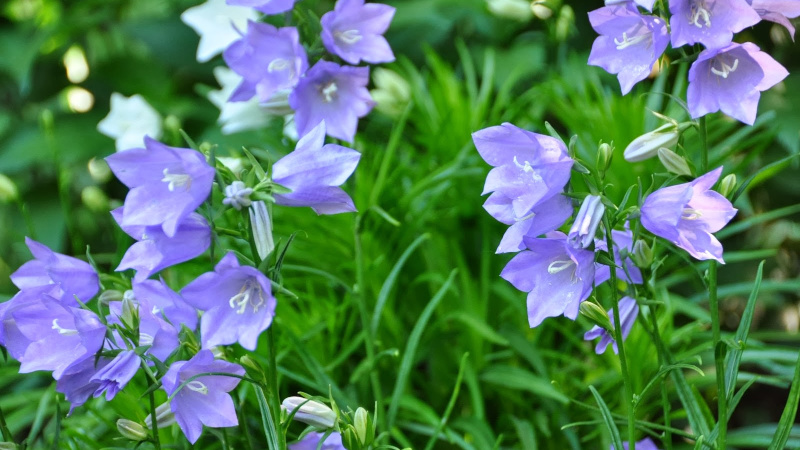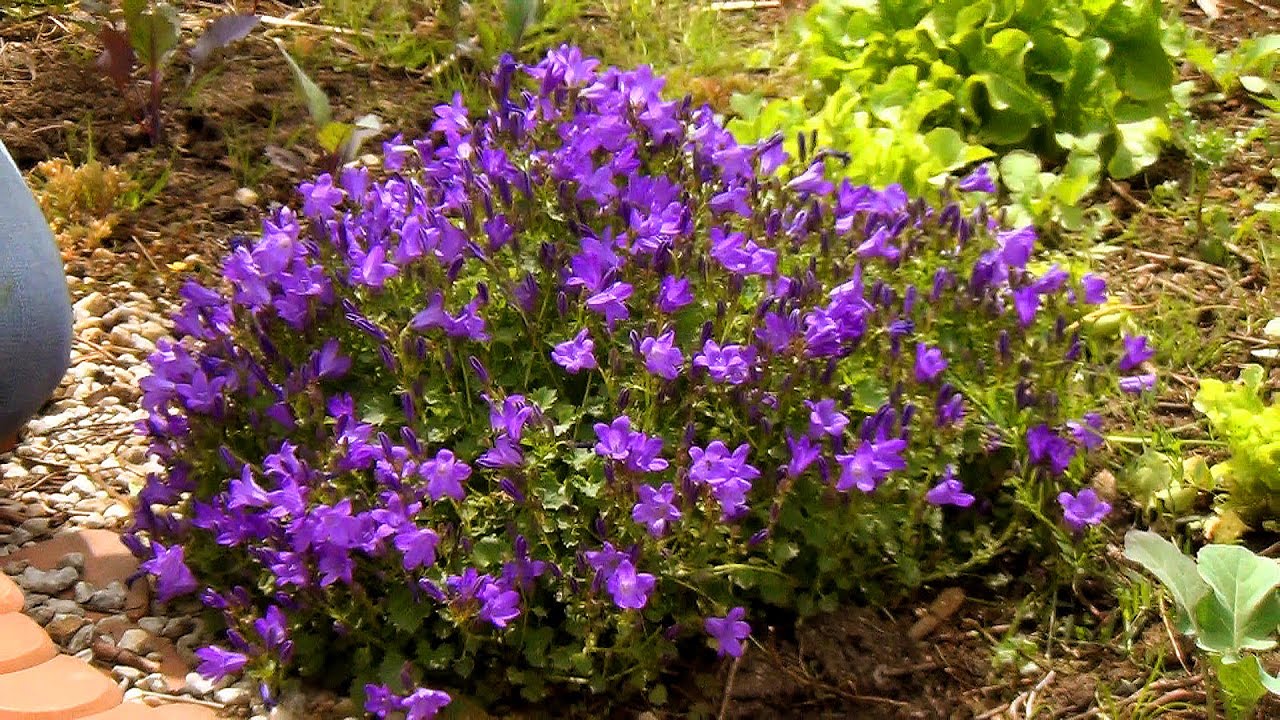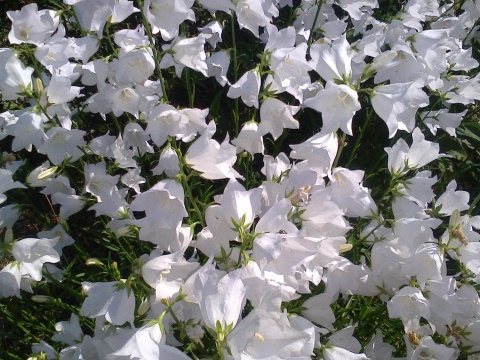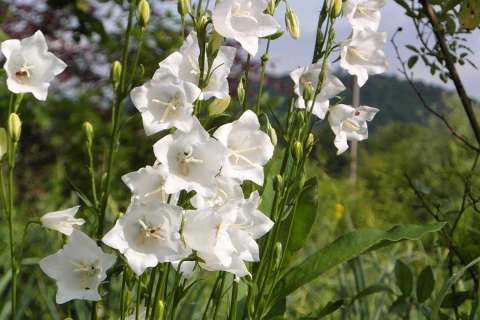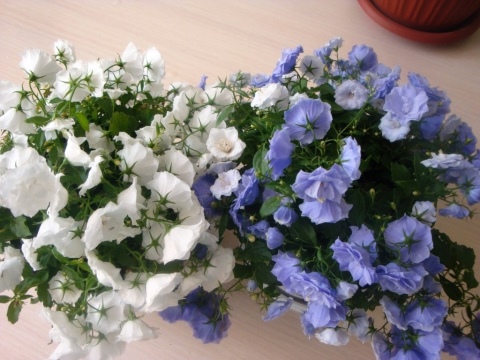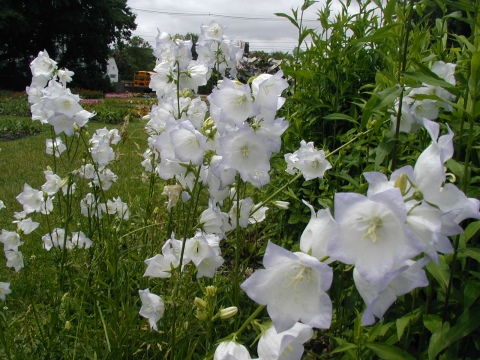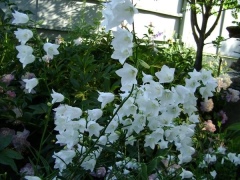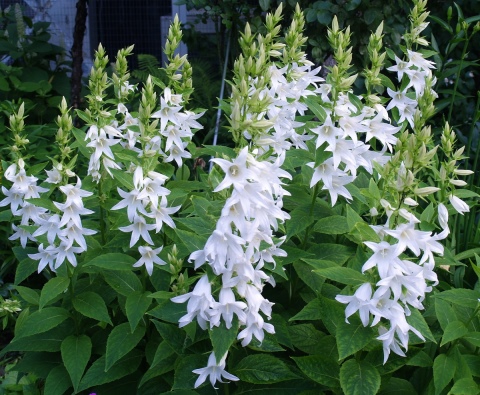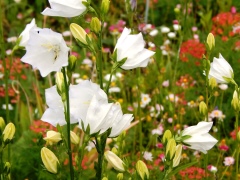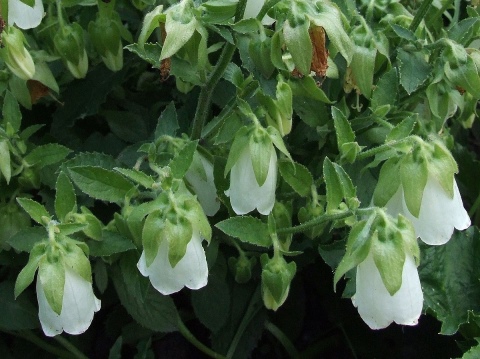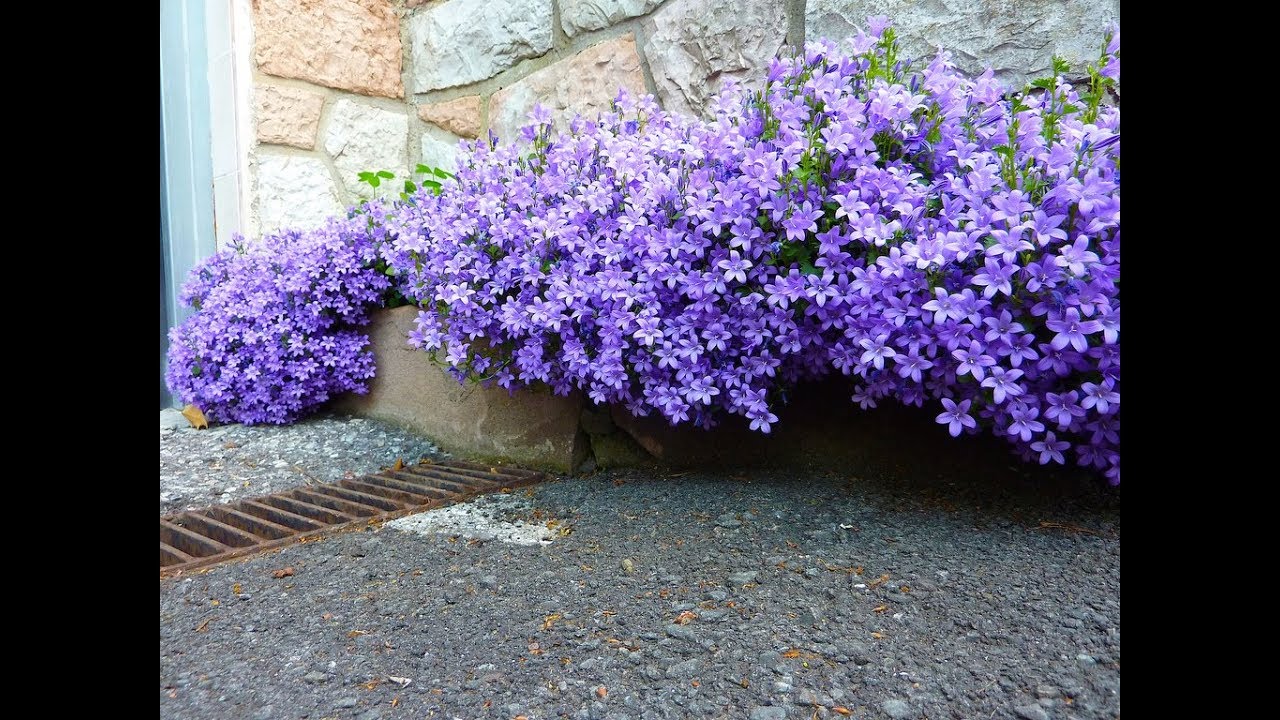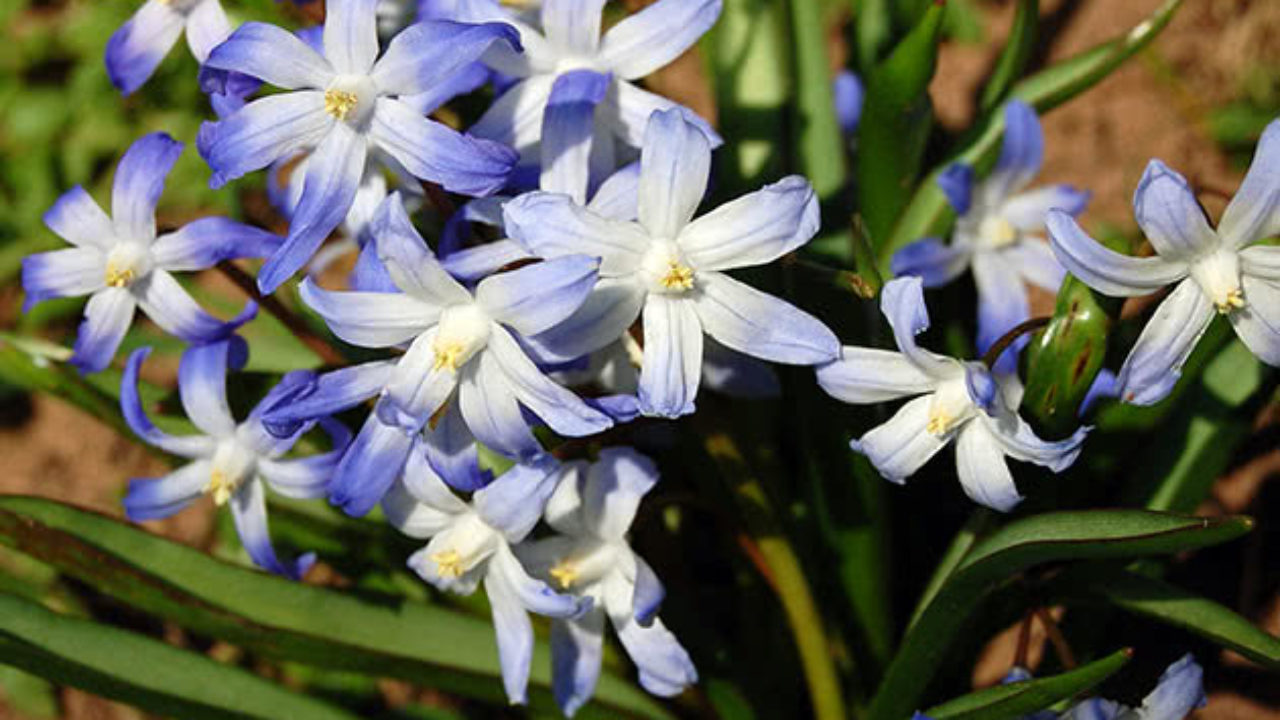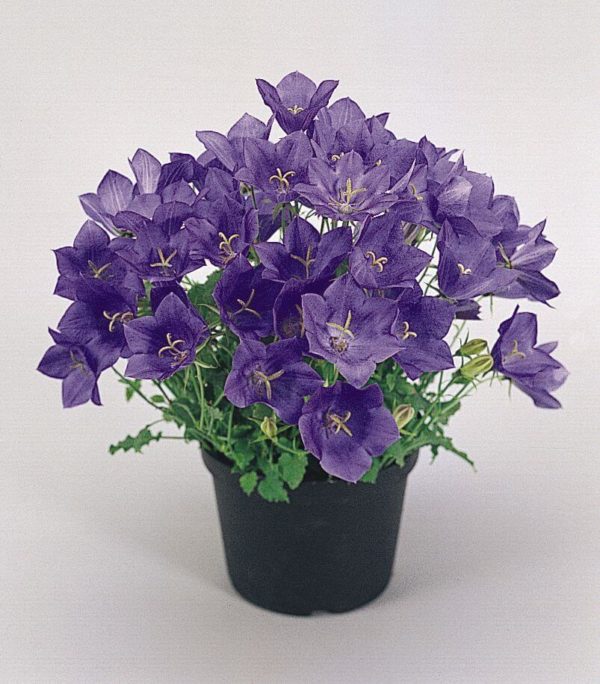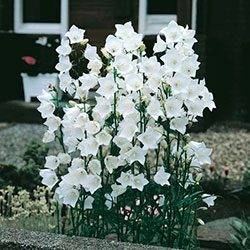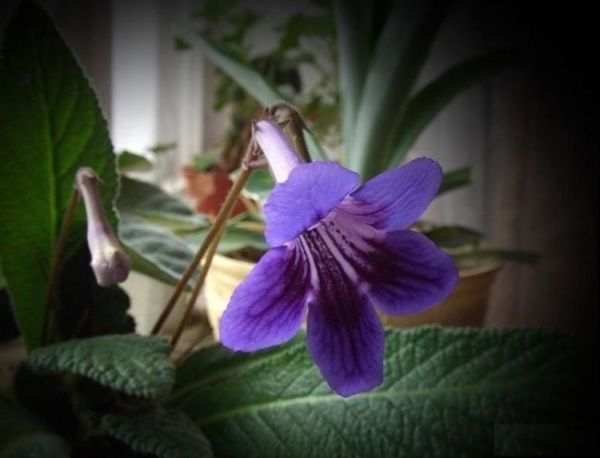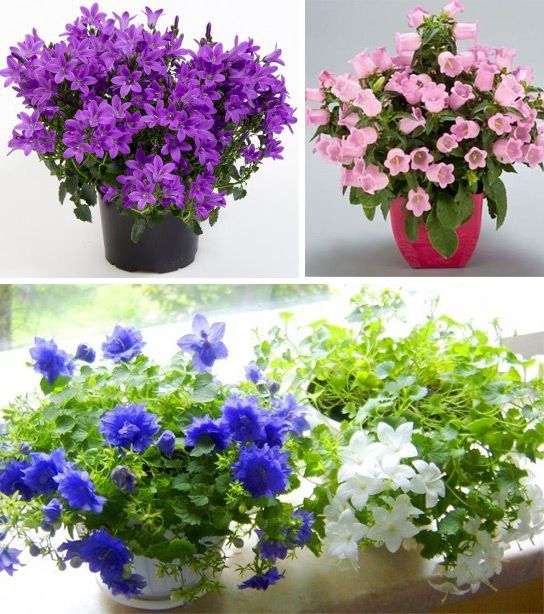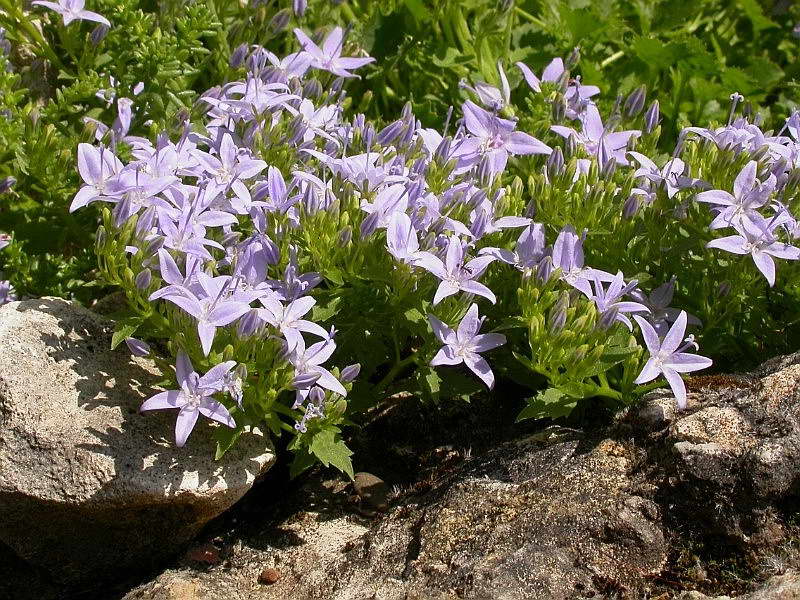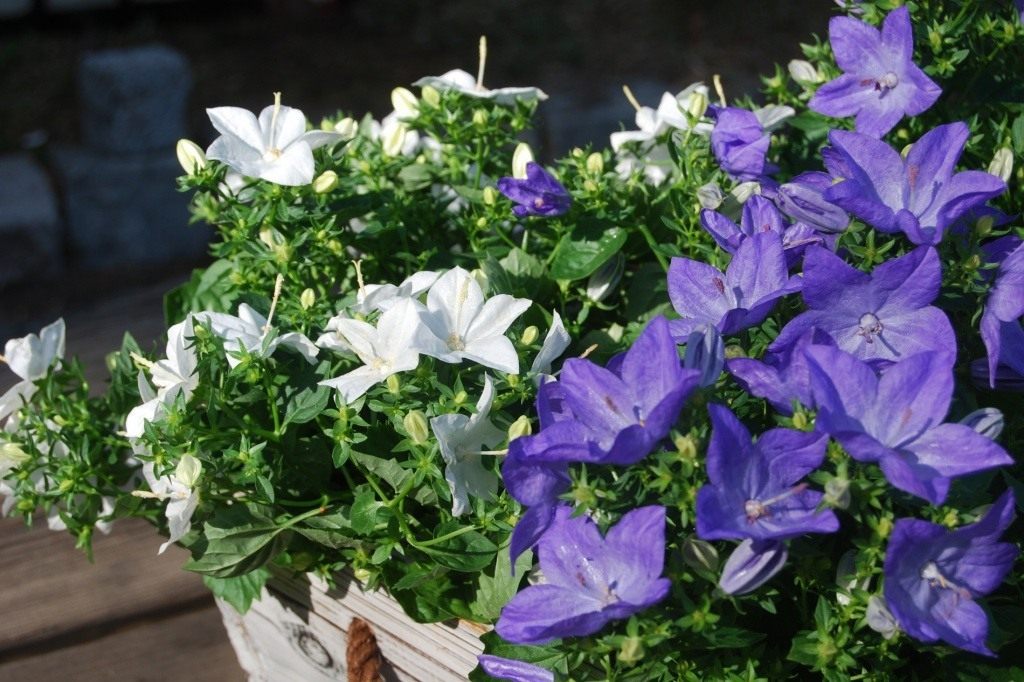Growing flowers from seeds
This method allows you to easily and quickly propagate elegant flowers on the site. Plants grow best on neutral, slightly alkaline soils. Flowers do not develop well in acidic soils. Therefore, clay soils are "diluted" with humus, compost at the rate of fifteen kilograms per square meter of area. If the soils are loamy, then 19 kilograms of humus are introduced per square meter of area.
Bells need well-lit areas to grow fully. Although flowers develop well in shaded areas. The bell "Cup and saucer" grows superbly under fences, where soil moisture is well preserved. Therefore, it is often planted near the eastern or western walls. But the flowers do not tolerate stagnant water and in very damp areas, the bells are simply overheated.
Seedling growing stages
For rapid seed germination, mix turf soil, sand and humus in a ratio of 6: 1: 3. The soil mixture should be loose, slightly damp.
- In the last days of March, small seeds are planted in moist soil. It is not necessary to sprinkle the planting material with earth, you can lightly sprinkle it with sand.
- The container with seeds is sprayed with water, covered with foil or glass and placed in a warm, dark place (air temperature is about 20 ° C). It should be borne in mind that seeds may not germinate in the light. Therefore, glass or film is covered with dark paper or thick dark material.
- Planting material germinates in 2-3 weeks. The covering layer is removed, and the container is placed in a well-lit place. But you should avoid direct sunlight on the sprouts.
Seedling care consists in periodically irrigating the soil and gently loosening it around the seedlings. Watering the ground should be done when its top layer dries.
As soon as the first leaves appear on the sprouts (after about 3-3.5 weeks), the "Cup and saucer" bell is dived - seated in separate containers. You can simply transplant the plants into one large box (the distance between the shoots is at least 10 cm). After another two weeks, fertilizing is introduced in liquid form. It is recommended to combine watering and fertilization.
With the seedling method of breeding bells, it will be possible to admire elegant inflorescences in the form of cups and saucers already this year.
Sowing seeds in open ground
A common option for breeding bells is sowing planting material in a summer cottage directly into the ground. You can set aside time for this both in the spring and in the fall.
In the last days of October, seeds are planted in an area protected from the winds. Only strong seeds can overwinter, so strong shoots appear in the spring. Already at the end of April - beginning of May, you can plant sprouts in permanent places (flower beds, flower beds).
When sowing in spring, the seeds are pre-stratified (approximately two months before planting). To do this, they are kept in a solution of potassium permanganate (about an hour). Then the planting material is washed, placed on a moistened cloth. To prevent the canvas from drying out quickly, it is placed together with the seeds in a plastic bag and placed in the refrigerator. It is possible to plant planting material in open ground in the second half of May.
When breeding bells in this way, it must be borne in mind that plants in the first year of life direct all their forces to the formation of a strong root system, to the development of leaf rosettes. Therefore, flowering can be expected only in the second year, when shoots with flower ovaries appear.
In order for the flowers to grow fully, they are planted at a distance of at least 30 cm from each other.To maintain soil moisture, the ground between the bells is mulched.
Plant care
Caring for bells is not much different from caring for any other unpretentious flowers. The only thing that can pose a serious problem for these plants is too long periods of hot weather or long periods of lack of rainfall.
These problems can be dealt with in the simplest ways: on especially hot days, plants can be shaded using nets or trellises, and the lack of natural moisture can be compensated for by irrigation.
The criterion for the need for watering is the same as for seedlings - as the crust appears on the top layer of the soil. After watering, the soil must be loosened to a depth of about 5-7 cm.
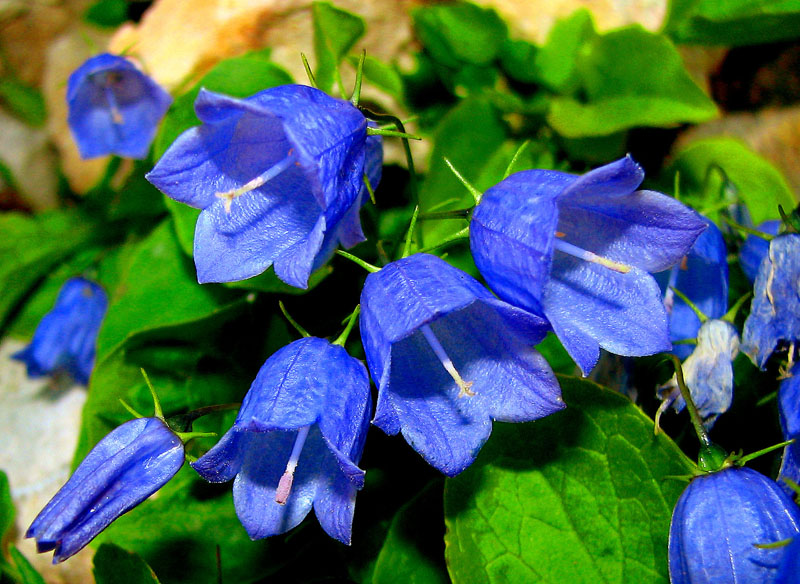
Spoon bell
If the tall stems of the bell are bent too much under the influence of the wind or the weight of their own leaves and flowers, they must be tied to special vertical supports.
No bell feeding is required in the first year. After fertilizing before planting in the ground, the second top dressing is done in the spring of next year in the already melting snow. Usually, any nitrogenous fertilizer (ammonium nitrate or urea) is used at a concentration of 30-40 g per 1 sq. m.
The second top dressing in the same season (in fact, the next after planting in the ground) is carried out in the first half of summer, as soon as budding begins. For it, either a complex fertilizer for flowers is used, or a mixture of phosphorus and potassium fertilizers in the amount of 15-20 g per 1 sq. m.
In order to extend the flowering time of the plant by 1-3 weeks, you should regularly remove the faded buds, preventing the seeds from forming.
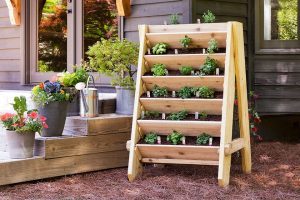
We make vertical beds with our own hands: the best ideas of 2018. For vegetables, berries, herbs and flowers (65+ Photos & Videos) + Reviews
Campanula garden perennial - description of the culture
Campanula has curly or straight stems, depending on the variety. A flower grows from 40 to 100 centimeters. Heart-shaped leaves (about 8 centimeters) are arranged on thin cuttings. The inflorescences are pyramidal in shape, reminiscent of a bell. Small flowers up to 4 centimeters in diameter. The color of the garden campula is varied from soft pastel tones to bright saturated colors. The bush blooms all summer.
The countries of the Mediterranean are considered the birthplace of the flower. In natural conditions, the flower can be found in meadows and in the steppe, in the forest and on rocks.
Common varieties
Among the wide variety of colors, the following varieties can be distinguished:
Campanula garden perennial
- Bellflower Milk-flowered. The branchy bush grows up to 1 meter. Thanks to the taproot system, it can germinate in heavy loamy soils. The buds are large, up to 4 cm in diameter, white in color. Flowers are collected in a large racemose inflorescence.
- Campanula Carpathian (carpatica). Carpathica is a stunted plant native to the Carpathians. The height of the bush is up to 50 cm. The carpatica species blooms from June to September. Inflorescences are blue or white. Often planted on balconies and rock gardens.
- Campanula Nettle. The height of the bush is up to 1 meter, the stems are straight, branched. The buds are large, white or blue. Some varieties have double inflorescences.
- Bell Peach. Plant height up to 90 centimeters, leaves resemble a fox peach. Inflorescences are blue or white. The plant is listed in the red book.
- The campanula is crowded. The shoots are thick, of medium length, they are tall or short. The flowers are blue, white and purple.
- Pozharsky's bell. The plant is not tall, it grows up to 20 centimeters. The flower is a dense accumulation of leaves and stems, among which are visible light blue inflorescences. The flower is shaped like a star.
Campanula Carpathica in the garden
Additional Information! Among the variety of varieties, Campanula is a perennial or annual.Perennials are prone to degeneration, so gardeners often grow the flower as an annual.
How cannes can be used
Cannes deserves a worthy place in the garden:
- they will look great in street pots and containers;
- the best place for cannes may be a hollow near a pond in the garden;
- cannes will majestically bloom their leaves and flowers in the center of the flower bed and in a single planting.
Where and how to plant
To grow cannes, you need to set aside an open area with fertile soil and ensure sufficient watering during the cultivation. Cannes do not belong to those plants that grow in the shade - with a lack of sun color, the decorative effect of this plant is lost. Cannes stems and leaves are fleshy, the lack of moisture in the soil affects the appearance of the plant and its flowering for the worse. In order for plants to bloom earlier in areas with a short summer, they are grown in boxes and tubs until the onset of heat.
Cannes are planted taking into account the growth of plants, leaving them free from plantings by half a meter in a radius around the rhizome. The wells are well loosened before planting and watered before and after planting the rhizomes.
Good flowering of cannes can only be achieved with good care - you need to regularly water, loosen the soil, remove weeds and apply fertilizer 2-3 times during the summer - complex mineral fertilizer crumbles on the surface before watering, and then, with loosening, is embedded in the soil
It is important to ensure the distribution of the granules without contact with the rhizome or other parts of the plant, otherwise lesions will appear that will rot
How to propagate
Cannes rhizomes are divided just before planting. To do this, clean the soil from the roots and cut them so that there are a sufficient number of buds on the divided parts.
To exclude decay, parts of the rhizome are treated with charcoal. Planting and caring for plots corresponds to caring for mature plants.
Cannes, even in flowering form, easily tolerate a transplant, it is only necessary to ensure watering before digging and until survival in a new place.
"Wintering" cannes
By the way, for the winter, the cannes bush can be transplanted into a tub and brought into the room - the plant will continue to grow and delight with its beauty in the cold season. Before frost, the stems of the cannes are cut off, the rhizomes are dug up and transferred with the soil to a room in which a constant positive temperature of about 8 degrees will be ensured.
The rhizomes folded in boxes and sprinkled with soil will be stored until spring; at a higher storage temperature, the rhizomes will need to moisten the soil. In the spring, the rhizomes are cleaned, divided and planted so that the bright cannes flowers delight those around them.
The cultivation of cannes is now very popular among amateur gardeners, the incentive for their breeding is the more and more new varieties that appear each other more beautifully.
I invite you to the group for "Country Hobbies"
Popular types of campanula

Biologists know about three hundred species of this plant, but at home it is customary to grow several varieties of campanula: terry, Carpathian, equifolia and Blauranka.
Campanula isifolia
The plant reaches 30 cm in height. Campanula is often grown in hanging pots. This is directly related to the peculiarities of the plant: thin stems hang down and resemble a decorative fountain. The green leaves are partly carved and grow on long cuttings. Campanula is an equal-leaved one strewn with numerous flowers of two shades (blue and white). In common people, this type of plant is usually called "the bride and groom."
Campanula Blauranca
One of the varieties of Campanula Pozharsky varieties. It differs from all previous species in the large size of leaves and flowers, but the height of the plant does not exceed 20 cm
During the flowering period, Campanula Blauranca attracts attention with its delicate light blue flowers.This variety is ideal for indoor and outdoor cultivation.
Terry campanula
This type of plant belongs to hybrids. Terry campanula appeared by crossing the Carpathian and spoon-leaved species. The plant is a small bush covered with double flowers of various shades (on one bush you can see white, blue, and purple flowers). The stems of the terry campanula are thin, bending and almost inconspicuous due to the large number of carved leaves.
This plant pleases not every grower with its blossoming beauty, since it is very picky in care, requires a lot of attention and special living conditions.
Campanula Carpathian
Refers to perennial plants. The shape of the leaves of this variety is ovoid-rounded. They are located at the root of the plant. The color of the flowers can be different. Flowering of the Carpathian Campanula begins with the arrival of summer, and lasts no more than three months. For the first time this type of campanula was seen in the open spaces of the Carpathian Mountains.





